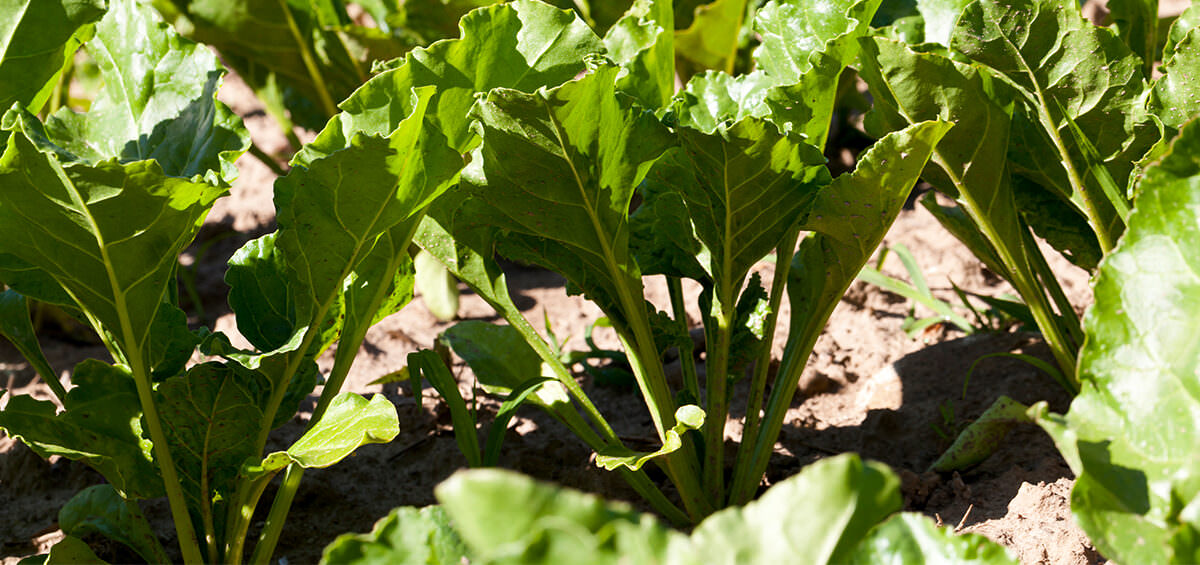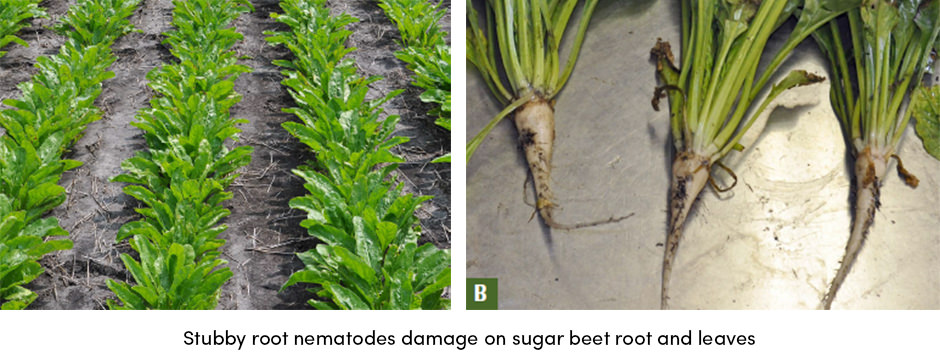Sugar beet is a biennial crop primarily grown for sugar production. It’s estimated that 20% of the world’s sugar supply is produced from sugar beet, while the remaining 80% comes from the sugarcane. Since the sugar beet is a crop with few requirements, it is grown worldwide. However, farmers should be aware that it does thrive in temperate and humid areas. The main sugar beet producers are the European Union, United States, Russian Federation, Turkey, Ukraine, Iran, Japan, and China.
Along with sugar as the main product, additional value of sugar beet farming can be found in its bi-products, such as pulp and molasses. The pulp can serve as an excellent source of energy for livestock, while the molasses is used as the industrial feedstock, as well as a supplement for animal feed. Another important bi-product is the lime from the juice purification process. The lime can serve to be beneficial to the soil, improving both sturcture and fertility.
The average sugarbeet yields are 40-60 tons per hectare. Effective farm management practices, together with favorable agroclimatic conditions can boost yields up to 70-80 tons per hectare. However, the yields are significantly threatened by Stubby Root Nematodes.
The Stubby Root Nematode as a Threat to Sugar Beet Yields
The Stubby Root Nematode is an economically important sugar beet pest that causes up to 50% yield losses. Nematode protection represents a challenge for farmers due to the fact that nematodes migrate vertically in the soil, constantly changing the depth of their presence. Moreover, root nematodes can be inadvertently spread easily from field to field by machines, animals, workers, the wind, and flowing water.
Symptoms of an infected crop are not always visible and obvious, especially because the infestation occurs in the soil. However, if a farmer suspects a nematode presence, he can have soil and sugar beet root samples analyzed. Determining the presence of root nematodes early can save the yield. Nematodes are found mainly in sandy, cool, and moist soils. They feed on the main and lateral taproot tips. The feeding of this pest causes swollen, stubby-ended root tips. Above-ground symptoms include poor crop growth, yellowing of leaves, and stunting of growth.
Protection Practices to Manage the Stubby Root Nematode
In order to preserve sugar beet yields, farmers should put all their efforts into prevention practices. Following, are several preventative measures that can be taken against the root nematodes:
- Compost sugar beet tare dirt before returning it to clean fields
- Avoid the use of machinery and tools used on fields infested by Stubby Root Nematodes
- Frequent washing of farm machinery and equipment
- Avoid the use of contaminated irrigation water (i.e. irrigation waste water)
- Avoid moving livestock from infested fields to clean fields
- Adding of mature manure on the field
- Planting nematode-free seeds
- Planting resistant varieties
- Crop rotation; a preferred farm management practice which is not effective if there is a wide host range of Stubby Root Nematodes.
Sometimes, despite all preventative measures taken, infestation of root nematodes may still occur. In these cases, best practice is for farmers to implement and manage sanitation and sterilization protection practices. There is also a wide range of chemical products, called nematicides, that can be used to suppress the infestation. However, they are often difficult to apply and can be expensive, making it an uneconomical solution.
Text and image sources: FAO || North Dakota State University





